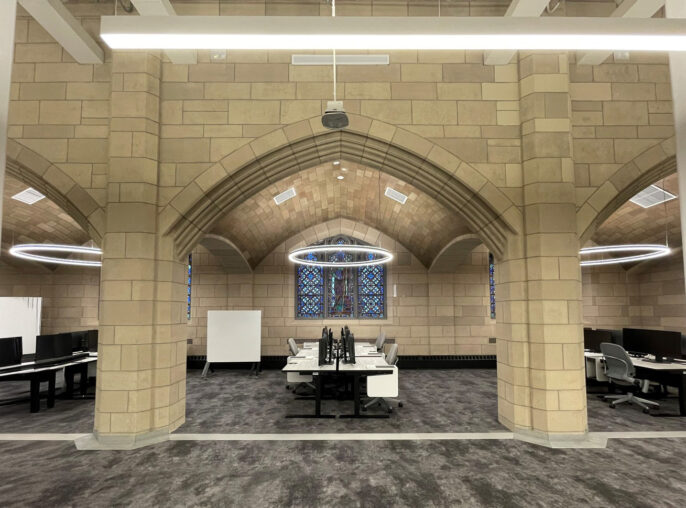Insight
How DEI Principles Can Improve Higher Ed Spaces

Diversity, equity, and inclusion frameworks can improve person-to-person interactions, but their greatest impact is on the built environment.
In 2023, who is college for? In response to the growing demand on American educational institutions to accommodate a wider variety of students, colleges and universities are exploring new avenues to foster Diversity, Equity, and Inclusion (DEI) within their campuses. Updated admission policies, school protocols, and thoughtful designs are all part of this effort to accommodate the diverse needs of the twenty-first-century student body.
Designing for Diversity
The college campus no longer primarily caters to students in the traditional 18 to 22-year-old age group. A rising tide of non-traditional students, from career-changers to lifelong learners, are enlivening classrooms, often balancing academic pursuits with work and family life. Furthermore, institutions are warmly welcoming a global community, celebrating diverse cultures, religions, and backgrounds. How is this reflected in campus spaces? On-campus childcare facilities offer invaluable support for student-parents. Meanwhile, dedicated spaces like prayer rooms, meditation corners, and quiet rooms serve students coming from a plethora of non-Western cultures and countries.
Designing for Equity
The Americans with Disabilities Act, introduced in 1993, paved the way for creating accessible routes within public buildings. Fast forward thirty years, and designers are not only adhering to ADA code but also innovating beyond it. Provisions in the code now accommodate those with hearing and sight impairments. Additionally, modern designs thoughtfully incorporate accommodations for service dogs and diverse safe spaces, ensuring inclusive and enriching educational journeys for all.
Designing for Inclusivity
The COVID-19 pandemic drastically altered the traditional format of higher education for close to two years, ushering in an era of remote working and learning. Institutions are now oscillating between in-person, remote, and hybrid class formats, and encountering new sets of challenges and opportunities for students on campus.
Here, we offer six insights to shape vibrant and inclusive higher ed spaces for the post-pandemic future:
-
- Safety Protocols: Students should have access to flexible spaces where they can attend virtual classes without compromising their safety, equipped with amenities such as ergonomic furnishings, reliable Wi-Fi, and charging ports.
- Comfort for Commuters: Spaces where commuter and part-time students can rest and rejuvenate during extended breaks are essential.
- Facilitating Easy Transitions: As campuses expand, it’s crucial to create convenient hubs where students can attend classes consecutively without the anxiety of covering large distances in limited time frames.
- Personalized Spaces: Areas that cater to students with sensory sensitivities and varied needs is essential to being able to say an educational environment is inclusive.
- Collaborative Learning: Alternative spaces where students can connect and share their passions together are invaluable. Some of these include maker spaces, robotics labs, karaoke lounges, performing and visual arts centers, and club sports facilities.
- Cultivating Memories: Beyond formal education, the college experience is enriched through informal interactions and memorable experiences. These often take place in transitional spaces—atriums, corridors, libraries, student centers, and study halls—and should be designed and furnished in a way to make these types of interactions commonplace and comfortable.
All the above listed items can be readily achieved in new projects by thoughtful planning and in renovation projects by prioritizing, judicious planning, and relatively small budgets.
HLW ArchInsights is a bi-weekly window into the dynamic world of architecture, where we explore industry trends, offer thought-provoking insights, and share the latest news from our firm, guiding you through the ever-evolving landscape of design and innovation.


